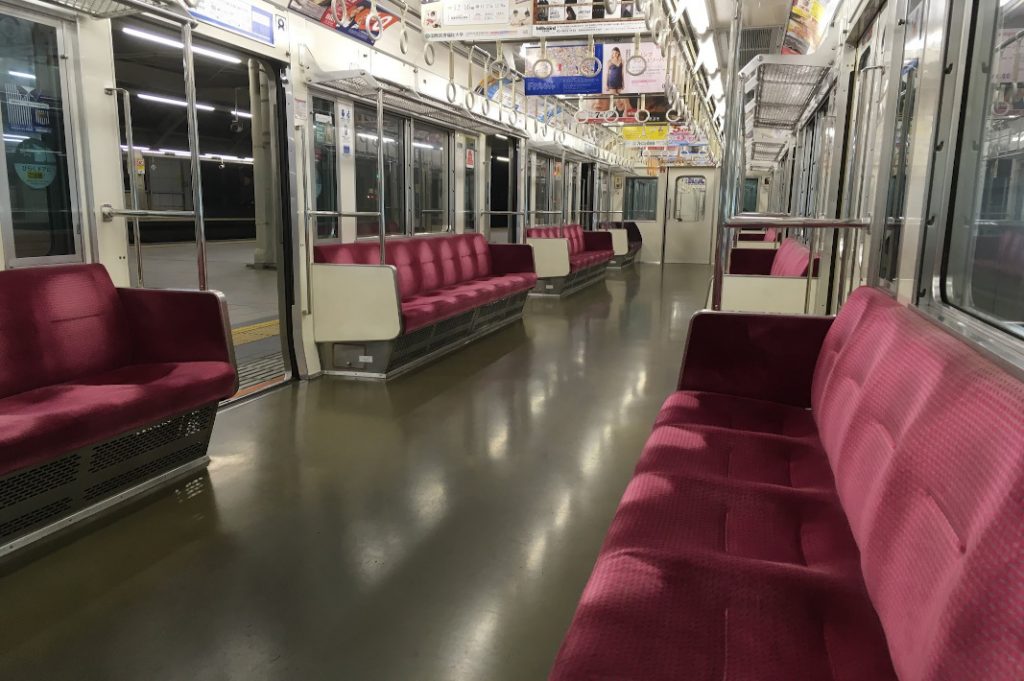After a two-day stay, we left the city of Hiroshima behind us and boarded a series of local trains on the Sanyo Main Line bound for Fukuoka. The 9thday of our trip would prove to be the longest. All told, we travelled for 6 hours without more than a coffee break. Though the trip didn’t allow for any detours, it did afford a chance to reflect on the trip so far and get a glimpse of the southern Honshu landscape. By the end of the day we had travelled 300 kilometres, but thanks to the preparation, leaving Honshu proved to be painless.
Navigating the Sanyo Main Line
If you plan to travel by train in Japan, it is important to research your journey in advance. Though the bullet train network connects many of the larger cities in the country, smaller towns can be relatively inaccessible. Moreover, local trains, even those along major thoroughfares such as the Sanyo Main Line are often smaller and less tourist-friendly. If you’re planning to visit some lesser known areas or have a lot of transfers, it’s best to use online train schedule applications such as Hyperdia or Google Maps, which often have up-to-date train times. This may sound like a trivial point, but our trip through southern Honshu required five transfers and wait-times lasted anywhere from a minute to an hour.

Stocking Up
The first time many people visit Japan, they’re surprised to learn about the general taboo on eating and walking. To avoid attracting glares from passers-by as you munch on your morning onigiri, you quickly learn to put it away. Fortunately, this is not true of train travel. Many of the nicer trains even have food carts making their way through the aisle. While this is not the case on smaller local lines, you can stock up beforehand. Many stations in southern Honshu and throughout Japan have super-markets or convenience stores on the premises. You can get your bento box microwaved and enjoy your food while watching the countryside pass you by without worrying about any disapproving looks.
Leaving Honshu
We had decided to take the local trains not only as a means of saving money, but also to see more of the country. In that regard, the 9th day of our trip was a successful one. With my bento perched precariously on my lap, I ate my tempura and looked out at the coastline of southern Honshu for the last time. The first stop was Iwakuni, famous for the large wooden bridge that runs through the city center. Our transfer didn’t allow any opportunity to cross it, as we had to catch another train that took us to another transfer point in Yamaguchi city. Sadly, we would also miss out on the famous Buddhist pagoda and Catholic Cathedral located there.
The alternating views of the coast and wide fields bracketed by mountains began to blur together as we neared our next stop in Shimonoseki. This was the last stop in Honshu and our final journey along the Sanyo Main Line. We decided to grab a cup of coffee to bolster us for the next part of the journey. With caffeine surging through our system, we said goodbye to Honshu and crossed through Kanmon undersea tunnel. After one last transfer we made it to Fukuoka and found our hotel. Everything had gone according to plan. Our long day of train travel was done, and we were ready to explore Kyushu.
Name: Sanyo Main Line
Address: 4-24, Shibata 2-chome, Kita-ku, Osaka 530-8341
URL: https://www.westjr.co.jp/global/en/timetable/
Post by Japan Journeys.